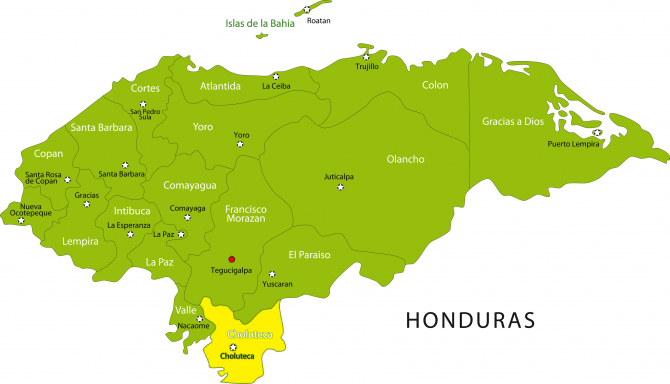San Martín, Choluteca, Honduras
![]()
![]()
![]()
![]()
![]()
![]()
![]() Click on Programs to learn more about their work in this community
Click on Programs to learn more about their work in this community
General Information

| Population* | 1,979 |
| Number of homes | 318 |
| Avg # of people per home | 6-7 |
| Number and % of children under 12 |
46% |
| Primary Occupations |
Agriculture and Mining |
| Water System | Yes |
| Community Bank |
Yes |
| % of Homes with Latrines |
95% |
| Electricity | No |
| Corresponding Health Center | CESAR-in the community |
| Common Illnesses |
Common cold, respiratory problems |
| School Access & Distance | up to 9th grade in community, 5-25 minutes walking |
| Municipality | Choluteca |
| Department | Choluteca |
| GPS | Not available |
| Distance from compounds | 1 hour 10 minutes |
* Population does not reflect how many patients will be seen on medical
brigades as many people from surrounding communities come seeking
Medical Brigades medical attention.
Top Three Needs Expressed
The top needs expressed by the key community members are better roads leading to the community, a water system that connects to the homes, and a permanent nurse in the health center.

San Martin is located in the Choluteca department of Honduras. It is located close to the capital of the municipality, also called Choluteca.
San Martin has a "Centro Basico", or primary school education center in the community. The school has 6 teachers, but only 4 classrooms. The school has 200 students total and teaches 1st through 9th grades. Some teachers have to teach more than one grade and all rooms have at least 2 grades being taught in them at the same time.
The community does have access to water, but not an actual water system. It has wells that are in the community for common use, but communities members have to transport it to their homes in buckets. Additionally, the wells do not produce enough water to serve the entire community adequately. This well system that they currently have was constructed by a German non-profit in 1990.
One of their top needs expressed was a water system with potable water, or water that connects to each home individually.
This community has a CESAR, or the smaller of the two different types of health center that the Honduran government offers. CESARs are small health centers that do not have doctors on duty but only nurses. This community in particular usually only has a temporary nurse on duty. Nurses will often be placed in rural communities while they are doing social service - this community has recently only had temporary nurses and has not had a consistent nurse in a while.
The most common illnesses are the common cold, respiratory problems, dengue, hipertension, and diabetes.
The main source of income in this community is through agriculture. Most people work on nearby plantations for large scale crops such as watermelon. Some people also work in the mining industry in this community.
There is no community bank here, nor is there access to credit through any other coorperatives or other financal institutions.
There are no additional observations about this community at this time.

